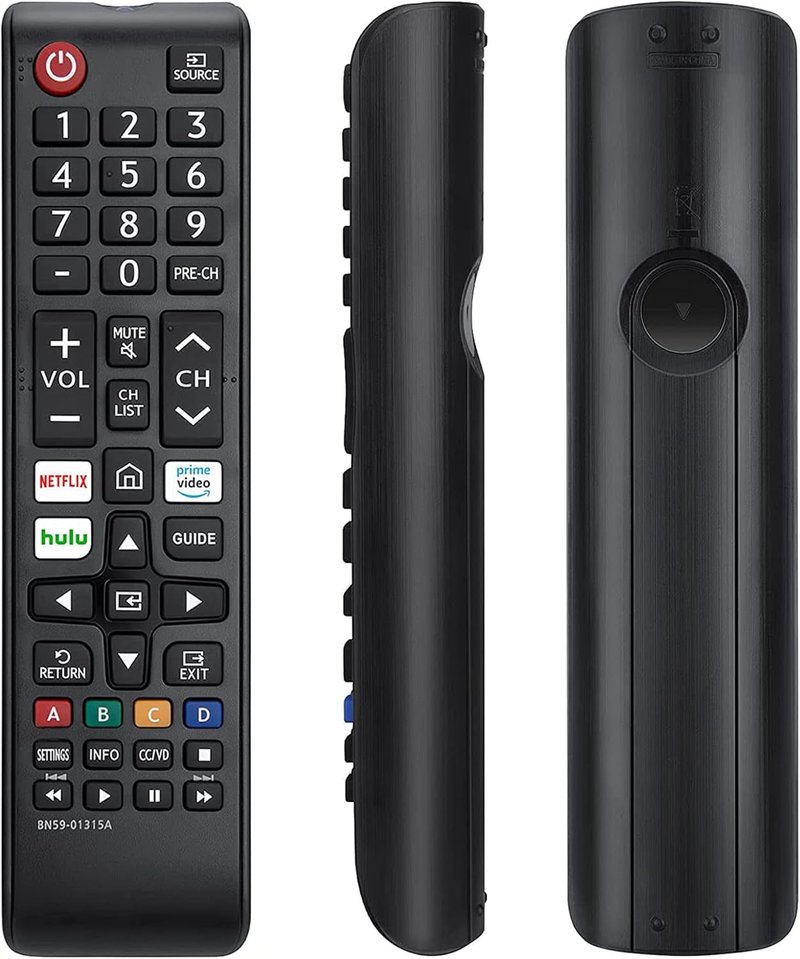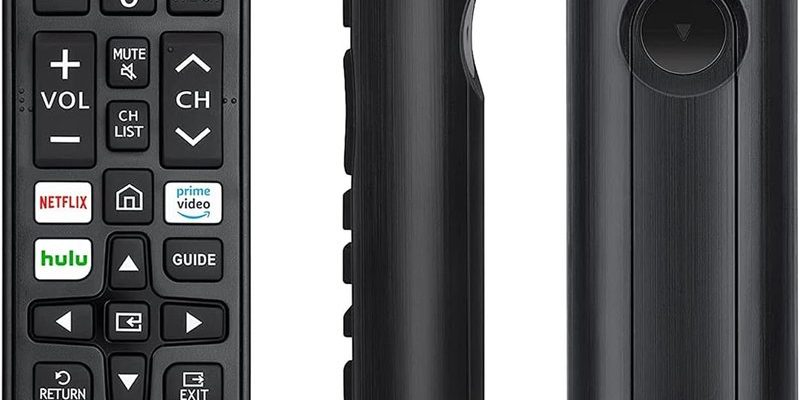
Here’s the thing: TV remotes can be tricky little gadgets. On the outside, most look pretty similar—buttons, batteries, maybe a Netflix shortcut if you’re lucky. But inside, they’re each speaking their own electronic “language.” So, what happens if you try to use a Samsung TV remote on a Roku TV? Is it even possible, or will you be stuck playing musical chairs with remotes forever? Let’s walk through what actually works, where the hiccups happen, and what you can do if you’re hoping for fewer remotes in the living room.
How TV Remotes Communicate With Your TV
TV remotes aren’t just clickers—they’re more like translators between you and your television. Each brand and model uses its own unique code to tell the TV what you want it to do. Think of it as sending a secret handshake; if you don’t know the right moves, the TV simply won’t respond.
Most traditional remotes, like those from Samsung, use infrared (IR) light. You press a button, and the remote blasts out an invisible IR signal that the TV “listens” for. If your remote uses Bluetooth or Wi-Fi, that’s a whole different ballgame—the signals are more complex and usually require some sort of pairing or sync process between the remote and the device.
The main thing to remember? **Samsung remotes are built to “talk” to Samsung TVs**. They’re not automatically speaking Roku’s language—unless, of course, the stars (and the codes) line up just right.
Samsung TV Remotes: What Makes Them Tick?
Before you try pairing your Samsung TV remote with a Roku TV, it helps to know what makes Samsung remotes special. Samsung uses a blend of IR and, in some models, Bluetooth or even Wi-Fi for their “Smart Remotes.” This means some will only work line-of-sight (the old-school way), while others have more advanced pairing features.
Fun Fact: The fancy Samsung “Smart Remote” models can sometimes control other devices using what Samsung calls “universal remote” features. But—and it’s a big but—they’re still best at talking to devices in the Samsung ecosystem. Trying to sync or pair them with a completely different brand, like Roku, can feel like teaching your cat to fetch…technically possible, but not likely.
The actual code or signal blueprint used by Samsung remotes is tailored for Samsung TVs. When it comes to Roku TVs, they’re generally based on totally different IR codes or might rely on Wi-Fi/Bluetooth remotes designed specifically for Roku’s unique interface. So right out of the box, don’t assume your Samsung remote and your Roku TV are ready to “shake hands.”
How Roku TV Remotes Work (And Why They’re Different)
Now, let’s peek at the other side: Roku TVs. These TVs run on Roku’s own operating system, and the remotes are either IR-based or, in newer models, use Wi-Fi Direct or Bluetooth.
Roku remotes are built with simplicity in mind—minimal buttons, quick access to streaming apps, and sometimes even voice features. But here’s the catch: the IR signals used by Roku TVs are different from those used by Samsung. That means, if you try to use a Samsung TV remote on a Roku TV, most of those button presses will go…well, ignored. It’s like speaking French to someone who only understands Japanese.
Some Roku TVs (especially those made by brands like TCL, Hisense, or Sharp) may support basic “universal” IR codes, but even then, the compatibility is hit-or-miss. Advanced functions, like opening the Roku home menu or using voice search, simply won’t work.
Can You Pair a Samsung TV Remote With a Roku TV?
Here’s where things get real: Samsung TV remotes are not natively compatible with Roku TVs. If you’re hoping to just point your Samsung remote at your Roku TV, press “power,” and watch the magic happen…you’ll probably be disappointed.
But don’t lose hope yet. Some very basic IR commands—like volume up, volume down, or power—might work on certain Roku TV models if the IR codes just happen to overlap (it’s rare and not something to count on). For anything beyond that, like navigating menus or entering settings, the Samsung remote simply won’t know what to do.
There is no built-in way to sync or pair a Samsung remote with a Roku TV through the usual “universal remote” setup. Samsung remotes don’t have the code libraries for Roku TVs, and they don’t support Wi-Fi Direct pairing with non-Samsung devices.
Universal Remotes: A Workable Alternative
So, what if you’re tired of swapping remotes and just want one device to rule them all? Enter the universal remote. Brands like Logitech (Harmony), GE, and even some off-brand models can be programmed to control multiple TV brands, including both Samsung and Roku.
These universal remotes work by letting you input specific codes or go through a syncing process to “teach” the remote what kind of device it’s talking to. Honestly, this can feel a bit like setting up a new phone—but the end result is a much cleaner coffee table.
- Universal remotes usually support a huge range of TV and streaming box codes
- They often allow learning from existing remotes, if you still have them
- Troubleshooting is easier because you can always reset and reprogram them
If you want to control a Samsung TV and a Roku TV with the same remote, universal options are definitely the way to go. Just remember to keep fresh batteries on hand, and expect a little trial and error during setup.
What About HDMI-CEC? Does It Help?
You might be wondering—if you connect your Roku TV and another device using HDMI, can you use something called HDMI-CEC to control both with one remote? Here’s the scoop: HDMI-CEC (Consumer Electronics Control) is a feature that allows devices connected through HDMI to send basic commands to each other, like “power on” or “volume up.”
In reality, this only works if both the TV and the device actually support HDMI-CEC, and the controls are usually limited. For example, using your Samsung TV’s remote to control a Roku streaming stick (not a Roku TV) plugged into the Samsung TV’s HDMI port might let you do simple things, but it won’t give you full Roku menu navigation.
*HDMI-CEC can be helpful for simple commands, but it’s not a fix-all for remote chaos—especially when it comes to crossing brands between Samsung and Roku TVs.*
Common Troubleshooting and Reset Tips
If you’re determined to experiment with remotes, there are a few troubleshooting basics that might help if things go haywire:
- Reset the remote: Take out the batteries, press every button once, then pop the batteries back in. This can fix a stuck button or weird code issue.
- Replace the batteries: Weak batteries can cause remotes to stop sending signals, even if the light still comes on.
- Double-check the pairing: If you’re testing a universal remote, make sure you followed the right sync or code entry process.
- Clear the path: Avoid objects in front of the TV sensor—IR can’t go through your stack of pizza boxes (I’ve tried).
Honestly, if you’re hitting roadblocks, it’s usually not user error. Most remotes just aren’t meant to cross the brand divide.
Comparing Your Options: Table Breakdown
If you’re a “lay it all out for me” kind of person, here’s a simple comparison:
| Remote Type | Works With Samsung TV | Works With Roku TV | Setup Required |
| Samsung TV Remote | Yes | No (except very rare, basic IR functions) | None (native for Samsung) |
| Roku TV Remote | No | Yes | None (native for Roku) |
| Universal Remote | Yes | Yes | Code entry or learning process |
| HDMI-CEC Feature | Sometimes (for basic commands) | Sometimes (if enabled on both devices) | Enable in TV settings |
Why Remote Compatibility Matters (And When It Doesn’t)
You might be thinking, “Why go through all this hassle? Just buy a new remote!” But honestly, keeping devices compatible can save you money, reduce clutter, and cut down on tech headaches. If you’ve got a family member who always loses remotes (guilty), having one that controls everything is a life-saver.
At the same time, if your devices are too different or too new, trying to force compatibility can be an exercise in frustration. Sometimes, investing in a universal remote or sticking to brand-specific remotes just makes more sense.
*Remote control compatibility is about convenience, not just technology. Pick what fits your household, your patience level, and your pocketbook.*
So, circling back, are Samsung TV remotes compatible with Roku TVs? For the vast majority of setups, the answer is no—they simply run on different “languages,” and there’s no official way to sync, pair, or code a Samsung TV remote to fully control a Roku TV. If you want true convenience, a good universal remote or sticking to the original is the safest bet.
I get it—remote clutter is annoying, and everyone wants that one-click experience. But sometimes, the simplest solution is just to use each remote for what it’s best at. Or, if you’re feeling a bit techie, treat yourself to a universal remote and retire the extras to a drawer. Either way, you’re now officially the “remote expert” in your household. Not a bad title, right?
